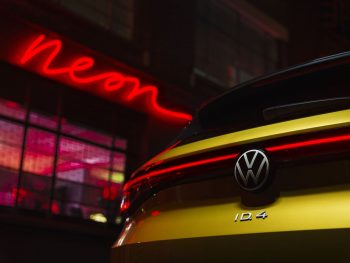Four findings from VWFS’ latest EV Tracker Report
The switch to EV adoption in the UK continues to gather momentum but there are a number of speed bumps that could put the brakes the progress we are making.

VWFS’ research continues to shed light on the rapidly evolving EV market
Latest Volkswagen Financial Services UK (VWFS) research finds challenges from perceived misconceptions on EVs, a record low in consumer confidence, and also the public charging infrastructure not being at the required optimum availability levels.
The third edition of its quarterly EV Tracker Report, the analysis draws on data from independent, reputable sources, as well as exclusively commissioned consumer research of more than 1,500 individuals nationwide, to reveal four key findings on current EV adoption across the UK.
1. The public charging infrastructure challenge
While EV sales have continued to rise, concerns still clearly remain around the available charging infrastructure and its ability to meet current and future needs.
The European Commission recommends a ratio of one charger for each 10 electric vehicles. That means for the current fleet of over 900,000 EVs, some 90,000 chargers would be needed. However, while there is overall growth, it is not at a sufficient pace to reach this ratio any time soon, with only around 600 new chargers being installed each month, and a total of 34,860 publicly available chargers at nearly 21,000 locations nationwide at the end of September, according to figures from Zap-Map.
Charger rollout is also far from uniform across the UK and has actually fallen in one region, Northern Ireland – although there was growth everywhere else.
Problems around insufficient provision (real or perceived) show that charging point availability would now put off 36% of potential EV buyers, compared with just 29% during the previous quarter.
However, this is to some extent mitigated by the growth in the number of home charge points, which is now estimated by Zap-Map to be at more than 400,000, and with roughly 40-50% of EV drivers able to charge at home, this leaves 50-60% of people relying solely on public charging infrastructure.
Despite this, mass adoption may start to slow when more drivers without private driveways consider making the switch.
Meanwhile, figures from research conducted during June by Transport & Environment suggest there are 33,000 workplace chargers in place nationwide, with financial incentives available under the Workplace Charging Scheme set to see the figure burgeon in the near future.
These figures could be interpreted to show a greater desire to use EVs for longer journeys and that there is a greater need for reassurance about not just the presence but the availability of charge points. This is in line with findings stating that the majority (69%) of those planning to buy a second-hand EV would expect to use it regularly for journeys lasting more than one hour, as well as for shorter journeys.
For confidence in the charging network to truly flourish, that coverage and availability needs to be paired with ease of payment, reliability and effective, rapid charging.
2. Consumer sentiment and influences
As a ‘big ticket’ item, the purchase of a new vehicle is arguably more susceptible than most to the impact of economic downturns and failing confidence among individual consumers.
With figures showing show that economic confidence remains at a record low, it is perhaps no surprise that net expectations for spending on ‘big ticket’ items reached a record low in September too.
On this basis, it stands to reason that price has become an increasing barrier to EV purchase. The latest figures put this as comfortably the largest obstacle, with 51% of respondents citing this as a factor, compared with 42% in the previous quarter.
Meanwhile, nearly two-thirds of consumers would now prioritise a cheaper purchase over one which would benefit the environment – very much in line with established thinking that broader concerns such as sustainability often fall in importance among consumers when tougher economic conditions take hold.
This compromise is also reflected in a growth in the number of people who feel it likely that they will buy a second-hand car: 22% said this was ‘quite likely’ compared with 16% three months prior. However, what is concerning is that of those expecting to purchase a second-hand vehicle, a lower number stated that it would be an EV than had been the case in the previous quarter. Indeed, only 15% said it was ‘very likely’ to be an EV purchase, compared with 25% previously.
However, while perceptions around cost may have caused some loss of enthusiasm around EVs generally, seven of the top 10 best-selling new cars in the UK during the most recent period were EVs.
3. Educating the potential EV market
The uptake of electric vehicles continues to gather pace and is on course to meet net zero targets, indicating that EVs are generally welcomed and regarded as a good thing. However, many misconceptions and gaps in knowledge remain among consumers.
Nearly one-third of respondents (32%) were still unaware that from 2030, they will be unable to order a new conventional petrol or diesel car. However, of those that were aware of the ban, nearly half (49%) said the ban made it more likely that they would purchase an electric car.
A similar proportion of all respondents (48%) said they would be willing to wait up to three months for delivery of a new electric vehicle.
Another point of concern is that a majority of consumers still feel greater trust in second-hand petrol or diesel vehicles (60%). Meanwhile, some 65% of respondents believed that EVs are likely to lose value as a result of a degrading battery.
Furthermore, there has been a growth, albeit small, in the number of people who feel that EVs are too expensive. Concerns also remain around choice, with only a third believing there is sufficient choice in the EV market, but while there has been a very modest increase in those who believe the charging infrastructure is insufficient, this applied to only one in four respondents.
One point to be welcomed was that 58% of respondents believe electric vehicles are better for the environment, compared with 55% last time round.
Misperceptions around EV quality, reliability and range are something which all interested parties must take rapid steps to address if the upward curve of adoption and progress towards the stated net zero target is to be maintained.
4. eLCV status
Battery-powered LCVs continue to enjoy strong growth. The variety of vehicles available continues to expand, against a backdrop of lower taxation, purchase incentives and zone charge exemptions.
LCV market-share for BEV powered commercials has grown from 2.8% in 2021 to 5.3% this year – and the trend is expected to continue as further new vehicles and ranges are introduced, and continued high costs for petrol and diesel make electric vehicle investment more attractive.
Conclusion

Mike Todd, CEO of Volkswagen Financial Services
Mike Todd, CEO at Volkswagen Financial Services UK, said: “Our latest EV Tracker continues to shed light on the rapidly evolving EV market and the factors influencing perceptions and overall adoption.
“Firstly, it is gratifying that the overall trend of adoption remains strong and puts the UK on course to meet the net zero target. Nevertheless, it would be wrong to assume that there is not still a long way to go.
“Economic conditions remain challenging and are likely to mean many individuals opt to delay a proposed EV purchase until their individual finances, and confidence in the future, are more favourable. Many people are keen to do more to be ‘greener’ but it’s not unreasonable or unexpected that they delay this in order to focus on more pressing financial considerations.
“Perceptions – whether right or wrong – remain about the inadequacy of the public charging infrastructure and these are deterring some from making the change to an electric vehicle. It is especially concerning that the playing field is not level nationwide when it comes to charging availability – and that any region, in this case Northern Ireland, has seen a reduction in its net quantity of chargers represents a significant disincentive to further take-up there.
“As a ‘big ticket’ item, the perceived cost of EVs continues to be a challenge for many considering adoption. As a finance provider, we continue to review the situation and develop innovative solutions that allow individuals to access the benefits of greener personal transport in a manageable and affordable way.”

